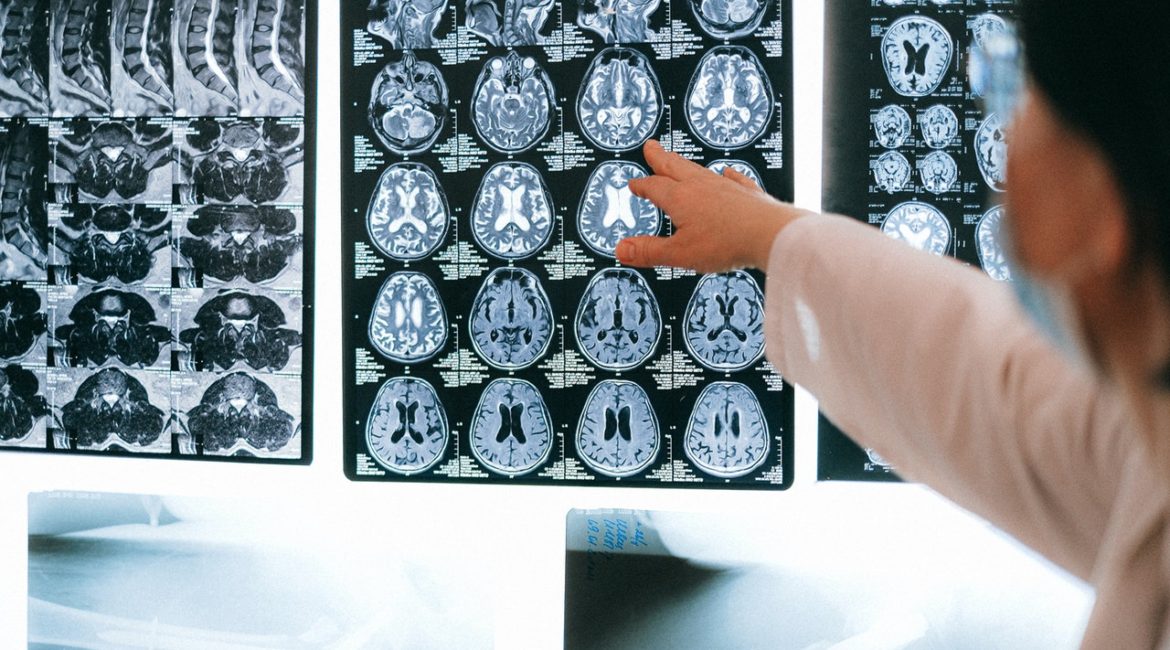Traumatic Brain Injury (“TBI”) are some of the scariest injuries a person can suffer in a car accident or slip and fall. While doctors can treat traumatic (and even catastrophic) injuries to the body, head trauma often has no treatment protocols. Many brain injuries, especially mild traumatic brain injuries, are simply left to heal on their own.
What is a Traumatic Brain Injury?
Traumatic Brain Injuries are serious and possibly deadly injuries which result from trauma to an injury victim’s head. According to the CDC, there were about 61,000 traumatic brain injury related deaths in the US in 2019. That is approximately 166 TBI related deaths per day.
Additionally, certain groups of people have been found to be more likely to suffer traumatic brain injuries. These groups are:
- Racial and ethnic minorities.
- Service members and Veterans.
- Homeless people.
- People who are in correctional and detention facilities.
- Survivors of intimate partner violence.
- People living in rural areas.
While traumatic brain injuries can occur in a number of ways, some of the most common causes of TBIs are car accidents, trucking accidents, pedestrian accidents, bicycle accidents, motorcycle accidents, and slip and falls.
Diffuse Axonal Injuries
Some of the most serious types of traumatic brain injuries are diffuse axonal injuries. Diffuse axonal injuries typically result from blunt force injuries to the victim’s brain.

Mild Traumatic Brain Injuries
A TBI occurs when trauma causes damage to the brain. While these injuries can be catastrophic and cause major damage to different parts of the brain, the majority of TBIs are mild or moderate in nature.
The most common mild TBI is a concussion. These injuries are incredibly difficult to diagnose. Diagnosis is difficult because mild TBI and concussion symptoms don’t always manifest themselves right away. Sometimes an injury victim’s TBI symptoms won’t appear for days or even weeks after the trauma.
This delay also causes some personal injury attorneys to miss their clients’ mild TBI. Mild TBIs and concussions will often improve over time and many mild TBI victims will heal within a few weeks.
A mild TBI can affect the way the victim feels, thinks or sleep. Many mild TBI victims will report feeling as if they are walking around in a fog. Many victims report headaches and trouble sleeping and then weeks later their symptoms will change to something completely different. This makes mild TBIs incredibly difficult to assess for medical professionals that aren’t trained to look for them.
Regardless of the name, a mild TBI can throw a victim’s life into total disarray. Long-term complications of a TBI, even a mild TBI, can include cognitive issues, emotional issues, and motor impairments.
How are Traumatic Brain Injuries Diagnosed?
Initially, a TBI is diagnosed clinically. That is, a doctor diagnoses a victim’s TBI based on the victim’s subjective complaints. Despite how common they are, TBIs are not easy to diagnose. Victims may not properly identify their symptoms to the doctor or, more commonly, the doctor to whom the victim is reporting their symptoms is not trained specifically in diagnosing TBIs.
Medical professionals that are evaluating an injury victim for a potential TBI will usually look for disorientation or confusion, amnesia near the time of the injury, and neurological or neuropsychological problems. Often, TBI victims will suffer from dizziness, blurred vision, headaches, loss of vision, amnesia, short-term memory loss, disorientation, poor concentration, agitation, irritability, depression, changes in personality, depression, and loss of appetite.
However, once a medical professional has clinically diagnosed a victim’s traumatic brain injury, there must be objective correlation. A TBI patient simply stating that they suffered a loss of consciousness as a result of a slip and fall or car crash will only get so far. That is, the doctor will order a diagnostic test. Typically the doctor will order a CT or an MRI.
The Glasgow Coma Scale (GCS) for Diagnosing Traumatic Brain Injury
Many physicians and emergency responders will diagnose traumatic brain injuries using the Glasgow coma scale (GCS). The GCS allows physicians to determine if a brain injury is mild, moderate, or severe based on the GCS.
The GCS measures three brain functions. These functions are eye opening, verbal response, and motor response. The scores are then added up to give the overall score. The scoring rubric is as follows:
- Eye Opening (E): 4-spontaneous, 3-to voice, 2-to pain, 1-none
- Verbal Response (V): 5-normal conversation, 4-oriented conversation, 3-words, but not coherent, 2-no words, only sounds, 1-none
- Motor Response (M): 6-normal, 5-localized to pain, 4-withdraws to pain, 3-decorticate posture, 2-decerebrate
When a TBI victim’s score is between 13 and 15, their TBI is classified as mild. As discussed above, mild TBIs are the most common. Injury victims with a GCS score between nine and 12 are considered to have a moderate traumatic brain injury. Lastly, injury victims with a GCS score of zero to eight are considered to have a severe TBI.
For example, a patient is considered to have a diffuse axonal injury if their GCS is below eight (8) for six or more hours.
Computed Tomography (“CT”) Imaging
A computed tomography scan (more commonly referred to as a CT scan) is a composite picture. Essentially, a CT scan takes thousands of x-rays from a number of different angles and then combines them to form a single three-dimensional image of the scanned area.
CT scans provide more detail than a single x-ray. For TBIs, they are great at revealing skull fractures, diffuse axonal injuries, and ruptures to blood vessels in the brain. Compared to x-rays, CT scans are immeasurably more effective when it comes to diagnosing brain injuries.
However, CT scans are not always the best method by which to image a brain injury. Despite their effectiveness, they can often miss mild TBIs such as concussions or bruises to the brain. The lack of effectiveness is a result of CT scans not imaging soft tissue. Instead, CT scans only visualize bones and hard tissues and will miss many injuries to brain tissue.
Instead, there is a different type of diagnostic imaging that shows more detail when it examines the brain.
Magnetic Resonance Imaging (“MRI”)
Magnetic Resonance Imaging is state of the art when it comes to detecting TBIs. The reason MRI is considered state of art is its ability to identify small signs of injury to the brain’s soft tissues. Specifically, brain MRIs are best used to reveal injuries such as:
- Microhemorrhage: a microbleed in the brain is a small brain bleed that typically results from structural abnormalities of your brain’s small vessels. The sooner a victim’s brain is MRI’d after an injury, the more likely the imaging is to detect a microbleed in the brain. Small brain bleeds like this can cause injuries like stroke or brain swelling.
- Brain contusion: head trauma can result in bruising to the brain. These bruises are anatomically no different than bruises to any other muscle in a person’s body.
- Scarring to the brain: also known as Gliosis, scarring of the brain is a central nervous system reaction to injury of the spinal cord or brain. Gilosis usually doesn’t occur until weeks after a TBI. Brain scarring is typically invisible on CT scans.
However, there are certain specific types of MRI that allow for different TBIs to be better visualized. Those are discussed below.
Diffuse Tensor Imaging (DTI)
DTI is a specific type of imaging captured with an MRI. DTI is specifically well-suited for diagnosing diffuse axonal injuries. It does this by detecting the white matter that connects the different parts of the brain. Neurosurgeons use DTI imaging to map the brain before surgery.
Susceptibility Weighted Imaging (SWI)
SWI is a specific type of imaging captured with an MRI. SWI is specifically well-suited for detecting small hemorrhages and brain bleeds.
Different Types of Traumatic Brain Injuries?
Injury victims can suffer a number of different types of brain injuries. Some of the most common ones are as follows:
- Brain Contusions: as discussed above, a brain contusion is a TBI wherein the victim’s brain is bruised. If a contusion is large enough, it could require surgery to repair it. Oftentimes, contusions are accompanied by swelling in the brain. If the swelling gets bad enough, it too could cause the victim to need surgery.
- Coup-Contrecoup Brain Injuries: coup-contrecoup injuries occur the victim’s head rapidly moves forward and backward in succession. This action causes contusions on both sides of the brain. In this sort of injury, the brain impacts the skull when moving forward, and then again impacts the other side of the skull when the victim’s head and neck recoil in the opposite direction.
- Diffuse Axonal Injuries: discussed above, diffuse axonal injuries occur when the brain matter is torn or sheared during a rapid acceleration of the victim’s head. Severe whiplash can often cause these sorts of injuries. These types of injuries can be incredibly severe and can sometimes cause death in the victim.
- Penetrating Brain Injury: a penetrating brain injury is when an object enters the skull and injures the brain. These types of brain injuries are severe and require immediate care.
- Subdural Hematoma: a collection of blood between dura and the surface of the brain. This is one of the most deadly brain injuries. The injury creates danger because blood quickly fills the brain area and compressing the brain tissue. In the most severe situations, emergency surgery is necessary to alleviate the pressure.
- Brain Bleeds (intracranial hemorrhage): these occur when there is bleeding within the brain tissue or bleeding between the brain and the skull.
Should I Hire an Attorney for my Traumatic Brain Injury Case
Of course, there is no legal requirement that victims suffering from TBI hire an attorney. However, as with other types of injury cases I’ve discussed previously in this blog: insurance companies are looking to save money in any way they can. They will happily take advantage of an injury victim that does not know the value of their own case and is operating at a diminished capacity to their injury.
Negotiating with an insurance company on your own (or simply without legal counsel) will always put you at a disadvantage. Remember, insurance companies and insurance adjusters negotiate personal injury claims everyday. They know the strengths and weaknesses of potential personal injury cases and TBI cases. Negotiating with an insurance company on your own will almost certainly result in you or your loved one receiving a diminished recovery.
Call Knapp Accident & Injury Law to handle your Traumatic Brain Injury Case
If you or a loved one has suffered a traumatic brain injury as the result of someone else’s negligence, you need to consult with an experienced traumatic brain injury attorney. I have years of experience pursuing compensation and justice for victims of negligence that have suffered both severe and mild TBIs.
I am available to speak to you about your traumatic brain injury case 24 hours a day and seven days a week. If you want to discuss your potential TBI case, call me today at (813) 568-3724. We offer free consultations, and I will personally evaluate you or your loved one’s traumatic brain injury case.





